Python scripting in ABAQUS Part1
€ 195.0
This training package includes workshops that help you to learn how to use Python scripting in Abaqus software. This is likewise the most comprehensive tutorial for the script, and it is appropriate for beginners to advanced users. The subjects such as parameterization, optimization, sequential running and etc., are covered in this tutorial.
| Expert | |
|---|---|
| Included |
.inps,video files, Fortran files (if available), Flowchart file (if available), Python files (if available), Pdf files (if available) |
| Tutorial video duration |
130 minutes |
| language |
English |
| Level | |
| Package Type | |
| Software version |
Applicable to all versions |
| Subtitle |
English |
Frequently Bought Together
Python scripting in ABAQUS part1 (for beginners)
By watching this Abaqus Python scripting package, you will learn the basics of Abaqus scripting and get a feel for Python. Moreover, the workshops demonstrate how to run optimization and parametric studies, placing your scripts inside loops and varying parameters. You also get an in-depth look into extracting information from output databases and job monitoring. All in all, you will get the knowledge and the confidence to write your own scripts for finite element simulations in Abaqus (FEA python).
Lesson 1- Introduction to Abaqus Python Scripting:
First of all, you will learn why we need to script. Secondly, a full explanation of useful words in Abaqus is prepared for you. Finally, you should know about what role Python plays in Abaqus and why we choose it over other scripting languages.
Lesson 2- Python Language Programming:
This lesson aims to teach everyone the basics of Python language programming, which is a prerequisite for Abaqus scripting. We cover the basics of how one constructs a program from a series of simple instructions in Python. For example, using variables to store, retrieve, and calculate information and core programming tools such as functions and loops, etc.
Lesson 3- Starting of Scripting:
This lesson will teach you how to run a script, both from within Abaqus/CAE and from the command line. You will receive a detailed explanation of Abaqus PDE. We’ll introduce you to different types of files applied in Abaqus Python scripting, including replay files and macros. You will be able to refer to the Abaqus documentation for using the built-in scripting method for your own simulation.
Workshop 1- simulation of a cantilever beam (Abaqus Python):
In this chapter, we go through a simple example of a cantilever beam to start scripting. You will work through all the steps in creating and setting up a finite element simulation in Abaqus using a Python script. You’ll discover how to use Notepad++ in addition.
Workshop 2- Running a number of jobs sequentially.
In this tutorial, we show you how to run a number of jobs continuously. You’ll be able to keep track of input files in subfolders of your directory and store simulation files in their own directory.
Workshop 3- scripting a 3D Truss of frame of I beam:
We analyze a 3D truss made up I-beam in this workshop. The example covers topics such as parameterization, creating datum planes and datum lines using a script. You will also learn to create a line load by using the Region() method a little differently to return a set-based region as opposed to a surface-based one. In addition, you will learn how to design complex and repetitive structures in Abaqus using Abaqus Python scripting.
Workshop 4- scripting of Bending a Planar shell:
In the last workshop, we will get familiar with another advantage of Abaqus scripting which is optimization by placing the bulk of your script inside of a loop and iterating through it. Additionally, you will use the created report files to execute some of the most common file handling (input/output) operations. During the process, you will be exposed to try-catch blocks, which are used to catch exceptions. You will also learn how to change the color of interesting parts in the viewport using a script, expanding your expertise in post-processing.
It would be useful to see Abaqus Documentation to understand how it would be hard to start an Abaqus simulation without any Abaqus tutorial. It should be mentioned it is the first part of the Abaqus Python training package; if you want to get more advanced information about Abaqus Python scripting (FEA Python), you can click Python scripting in ABAQUS Part 2.
Python is a popular computer programming language used to develop software and websites, automate processes, and analyze data. Since Python is a general-purpose language, it may be used to develop a wide range of programs and isn’t tailored for any particular issues.
Python is a dynamic, bytecode-compiled, and interpreted language. Variable, parameter, function, and method types are not declared in the source code. You lose the source code’s compile-time type checking but gain short, flexible code as a result.
What are the basics of Python?
- Properties. Python is implicitly and dynamically typed, so you do not have to declare variables. …
- Data types. Let’s move ahead to data types. …
- Strings. Let’s move on to strings. …
- Flow control statements. …
- Functions. …
- Classes. …
- Exceptions. …
- File I/O.
The following are some of the advantages of Python:
- Easy to Code. Python is a very high-level programming language, yet it is effortless to learn. …
- Easy to Read. …
- Free and Open-Source. …
- Robust Standard Library. …
- Interpreted. …
- Portable. …
- Object-Oriented and Procedure-Oriented. …
- Extensible.
In order to interface with and automate pre- and post-processing tasks, activities, processes, or more generally, 3rd party Python functionality, Abaqus is provided with a Python AP.
An application programming interface (API) to the models and data utilized by Abaqus is the Abaqus Scripting Interface. The Python object-oriented programming language is extended by the Abaqus Scripting Interface, and Abaqus Scripting Interface scripts are Python scripts.
A script is a piece of code created in a high-level programming language that executes pre-existing operations automatically. It is a potent tool that enables you to combine Python’s strength with the capability of Abaqus’ Graphical User Interface (GUI).
Main tasks can be done using python in Abaqus
- Exactly repeat what is done before
- Modifying a parameter
- Looping over a parameter
- Modifying a location
- Changing the (imported) geometry
- Making a script generally applicable
If you want to learn finite element analysis using Python ( FEA Python ), getting more information about the Abaqus software and its abilities is better. Usually, Python is not directly used for finite element analysis, and Abaqus is more often applied for FEA (finite element analysis) instead of Python.
- What do we learn from this package?
- Teaching plan and Prerequisites and Next steps
- Package specification
You can watch demo here.
- Why to script?
- How python fits into Abaqus?
- What are the useful words meaning in Abaqus scripting?
- What is the python programming basics?
- How the control flow of python program is regulated?
- What is the module?
- What are the different types of files in Abaqus scripting?
- How to run a script?
- How to get advantage of macro and replay files?
- How to use Abaqus help?
- How to start coding in Abaqus scripting?
- How can we simulate by scripting?
- What are the differences between modeling in Abaqus GUI and by scripting?
- How to create a long list of stress/strain tuples for Plastic property of the material.
- How to run number of jobs successively?
- How to parametrize our simulation?
- What is the prompt box?
- How to show results on XY plot?
- How to optimize our simulation?
- What we can do with output file by Abaqus scripting?
- How to send email containing the desire job results after analysis?
Users ask these questions
In social media, users asked questions regarding Abaqus scripting issues, and we answered a few of them; you can see them below.
I. Using Python code to define a path and extracting XY data
Q: Good day, everyone! I need to extract XY data along the central area of an element subjected to heat transfer (steady-state analysis). In particular, I’m attempting to extract heat flux components and nodal temperature at the nodes indicated in the attached diagram. The mesh is built on a partition of a part, with each partition having a distinct thermal conductivity. The purpose of this exploratory investigation is to figure out what the smallest area with the maximum thermal conductivity value (the “green” area in the image) is for which the heat flux can be considered 1D. As a result, I’m attempting to plot the heat flux against the node distance within the considered element.
Because the mesh is dependent on the object’s dimensions, and these dimensions – the unknown variables – were parameterized using python macros, I’d like to know how to utilize a python function to extract the same path as seen in the figure as the size of the “green” area varies. The number of elements varies as well (the mesh is determined by element size, not by the number of elements), therefore the node labels change. Please accept my thanks in advance for your response.
A: Hi, I hope you are doing well. Actually, I have seen your work and done something like this before. It could be a little complicated. However, if you know how to use python, it would be easy. Thus, I recommend you refer to the following links: Python scripting in ABAQUS Part1 and Python scripting in ABAQUS Part 2
Here, you can learn python from beginner to advance. Also, an example like your problem is in it as well. I hope it will help you with your current problem and future problems.
II. Creating a specific geometry in Abaqus
Q:
I want to simulate a bent tube in ABAQUS with continuous linear function thickness and diameter variations from one end to the other. To help you comprehend the question, I’ve attached a sketch.
Mesh definition, surface definition, and boundary condition specification are crucial since later on I want to hydroform it into an even more intricate shape. For modeling programs like SolidWorks, CATIA, or ProE, it is not a problem, but importing parts from them is a mess. Even if the import is somehow successful, meshing, surface interaction definition, and BC defining are challenges. Therefore it would be fantastic if I could directly simulate it in ABAQUS.
I attempted to use the 3D/Shell deformable sweep command, but it just requested a sweep geometry and then continuously swept the geometry along the stated path, when I wanted to linearly alter the thickness and diameter.
Is it possible to carry it out?
A: Hi,
You should write a Python script to sweep this or create any other geometry that has something like this. If you need any tutorial videos for scripting, I suggest checking the link below. It will help you with your current problem and future as well.
Python scripting in ABAQUS Part1
Best regards.
III. Post the running status through email
Q: Hi All,
I am running very big Analysis 16 hours & i need intimation the through email for running status file.(.status).
Whether 50 % or 80% for completion. I need any python code & how to define cae side email notification.
Please share the your comments or Answer ..
Thanks,
A: We have the python code in our scripting package that sends emails to users about simulation status.
IV. Importing data from MATLAB to ABAQUS
Q: Hello, I have a dataset with x,y,z point coordinates from a CMM surface measurement. How can I process the surface dataset in Matlab and then export and define it as the beginning surface of a body in ABAQUS so that I can do a mechanical analysis on it? Is it necessary to export the surface data as mesh in whatever format? The contour residual stress analysis is my primary goal.
Thank you in advance for your response.
A: Hello,
If I’m not mistaken, you are talking about point cloud. First, you should import this dataset to software like CATIA and form your model with this point cloud. Then, import this created model to the ABAQUS and do whatever you want with it.
V. Python scripting
Q: Hello, I need help getting a code in python or Fortran for elastic stiffness to calculate the shear modulus at varying mean effective stress by the Hardin formula in Abaqus. Can anyone help regarding this, or else from where I can learn to code?
Regards.
A: Hello,
First, you need to determine the equations you want to implement in your coding to decide which one is suitable for your work, python or Fortran.
Second, if you do not have enough knowledge of how to write python code or Fortran, I recommend checking the links below. These will teach you professionally python coding and Fortran to get what you need for your current and future problems.
Python scripting in ABAQUS Part1
this one is for python.
Introduction to USDFLD and VUSDFLD Subroutine
UMAT Subroutine (VUMAT Subroutine) introduction
and these two are suitable for Fortran according to your problem.
VI. Python scripting in Abaqus
Q: I’m using Python to operate the Abaqus GUI and create an RVE with PBCs. There is no interphase or interface material because the material is an Ox-Ox CMC. I’ll have to delete some of the elements to indicate porosity.
Is there anyone who has done something similar before?
A: Hi,
If your problem is geometrically and you want to know how to use python to model this composite, I suggest referring to the links below. You can learn a lot about python. You won’t regret it.
Python scripting in ABAQUS Part1
Python scripting in ABAQUS Part 2
Just remember, you must know the relations needed for the modeling.
If your problem is to define material properties, I recommend using UMAT and VUMAT subroutine. You can refer to this link:
UMAT Subroutine (VUMAT Subroutine) introduction
Again, you need to know the equation of the composite material properties.
Best wishes.
All the package includes Quality assurance of training packages. According to this guarantee, you will be given another package if you are not satisfied with the training, or your money is returned. Get more information in terms and conditions of the CAE Assistant.
All packages include lifelong support, 24/7 support, and updates will always be sent to you when the package is updated with a one-time purchase. Get more information in terms and conditions of the CAE Assistant.
Notice: If you have any question or problem you can contact us.
Ways to contact us: WhatsApp/Online Support/Support@CAEassistant.com/ contact form.
Projects: Need help with your project? You can get free consultation from us here.
- Online payment: with MasterCard, VisaCard and etc.
- Offline payment: In this payment method, you should pay via PayPal and send your payment receipt as an attached file in the offline payment form.
- via download link After purchase, a download link will be sent to you a zip file included training videos, documents and software files.
- Send us your machine ID
To access tutorial video run the .exe file on your personal pc and send the generated code to shop@caeassistat.com and wait for your personal code, which is usable only for that pc, up to 24 hours from CAE Assistant support.
Here you can see the purchase process of packages: Track Order
11 reviews for Python scripting in ABAQUS Part1
You must be logged in to post a review.
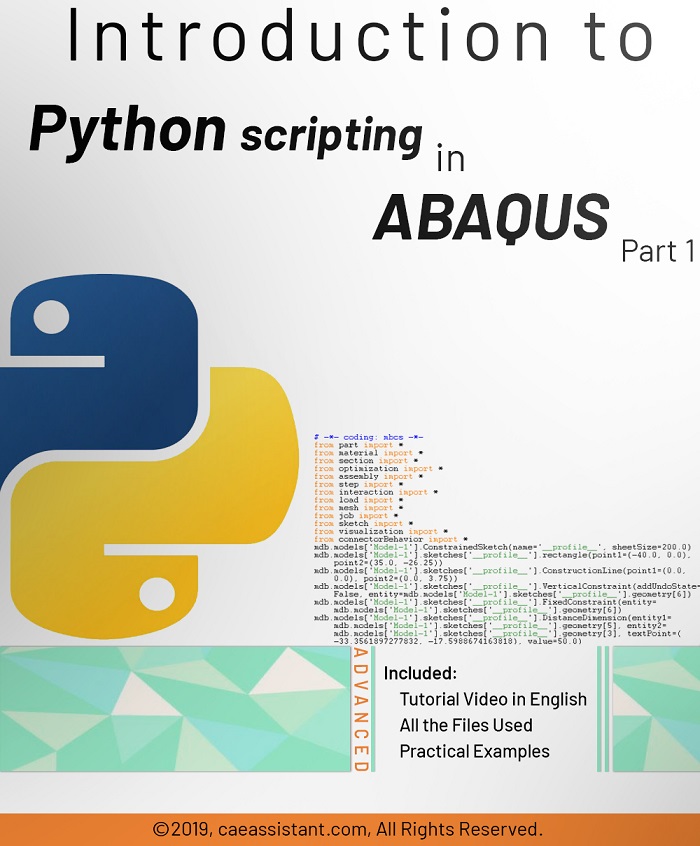
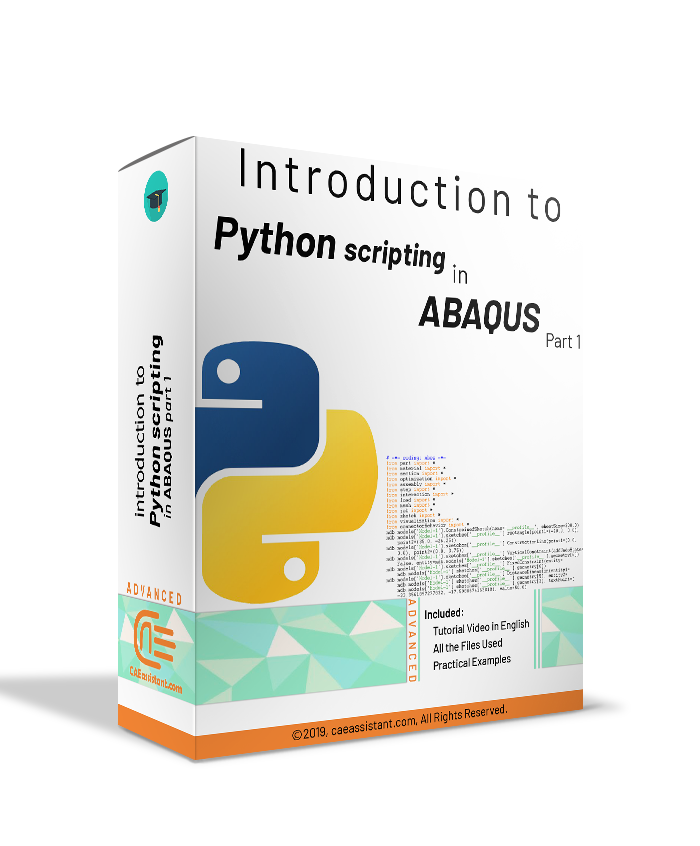
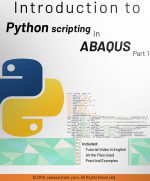
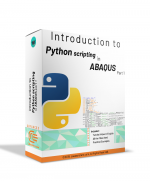
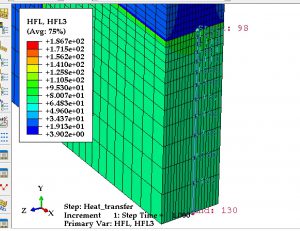
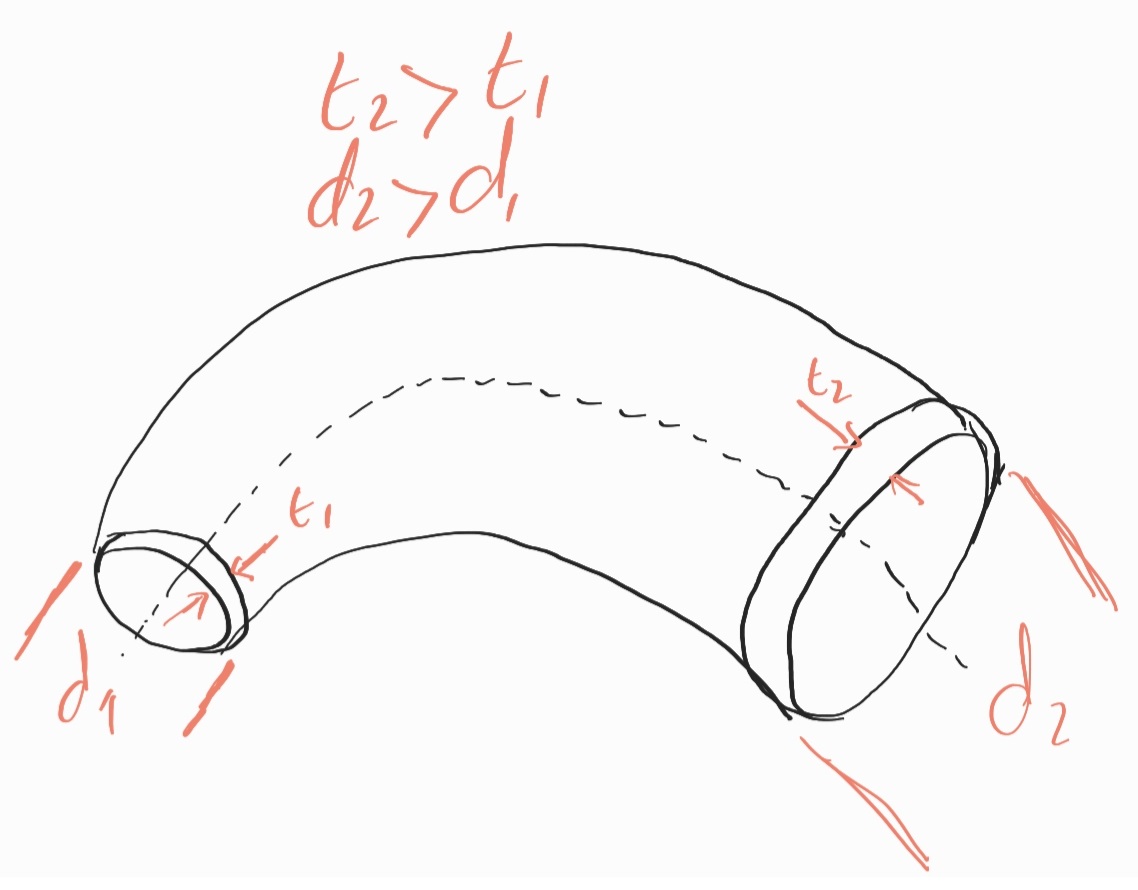
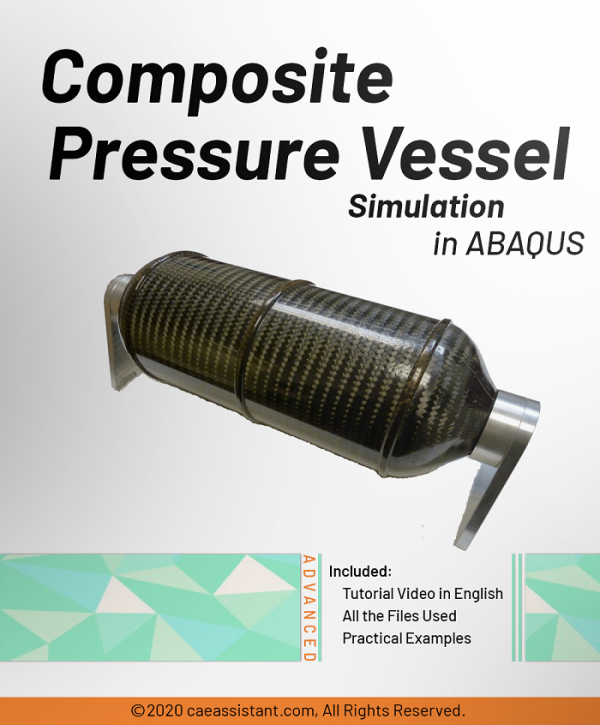
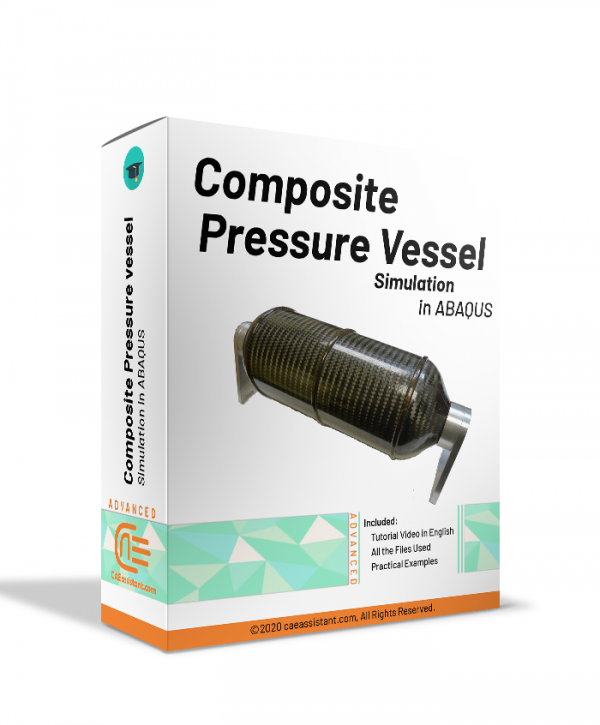

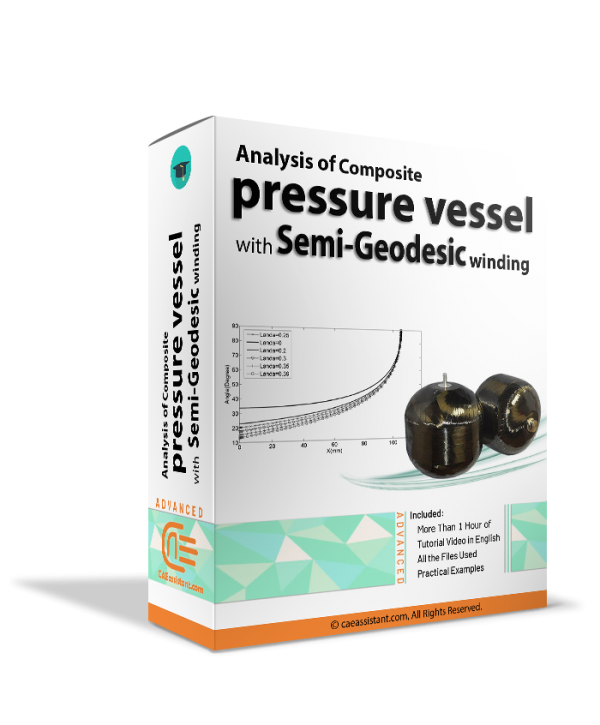

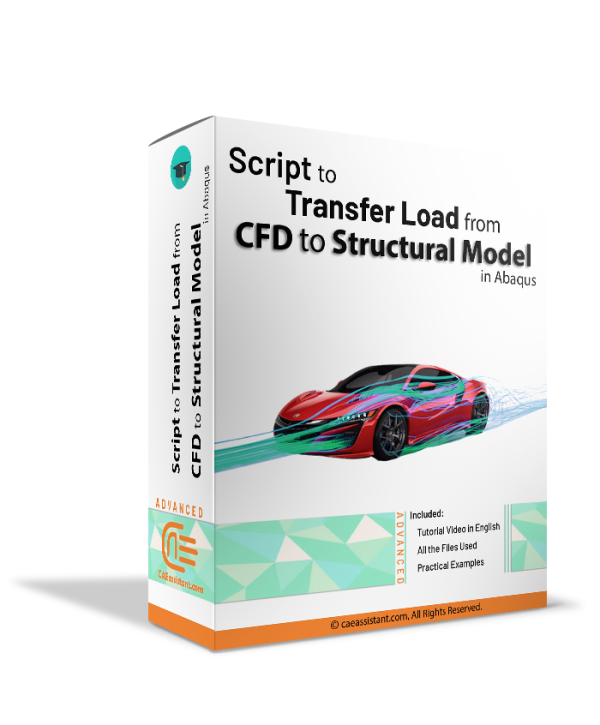
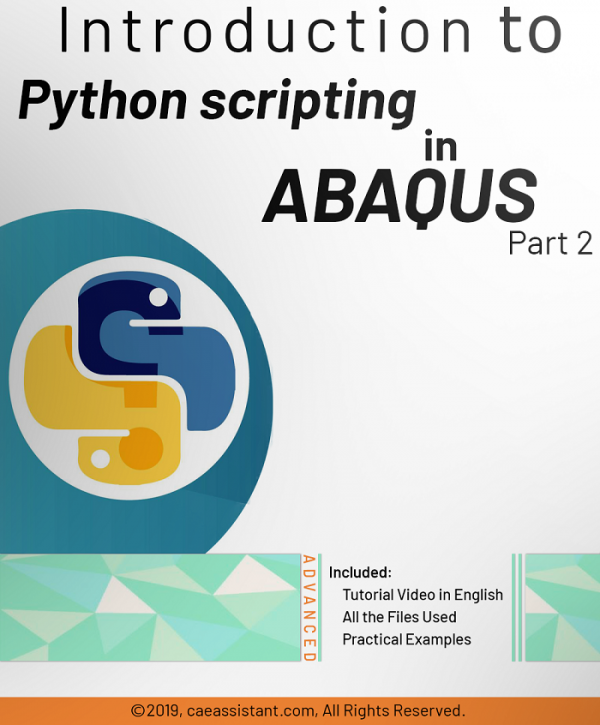
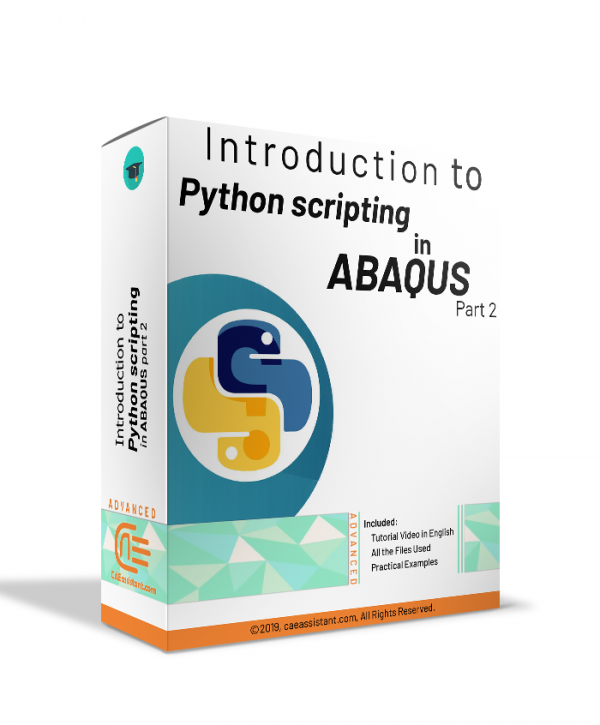
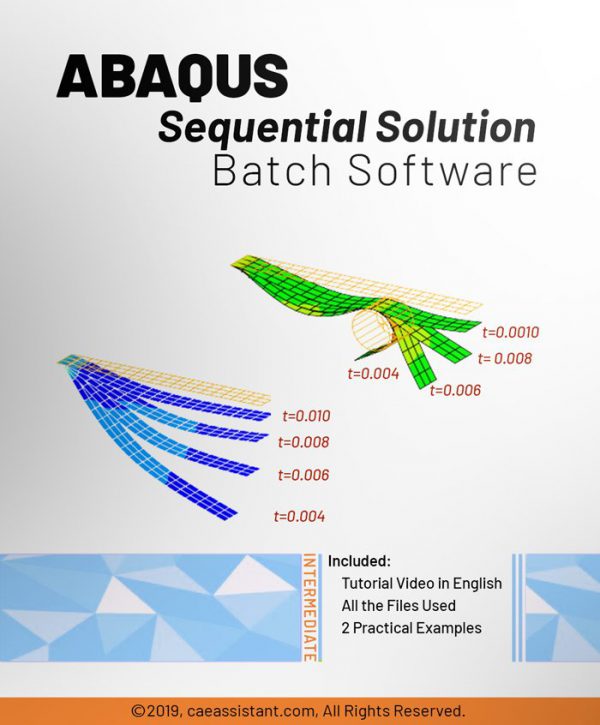
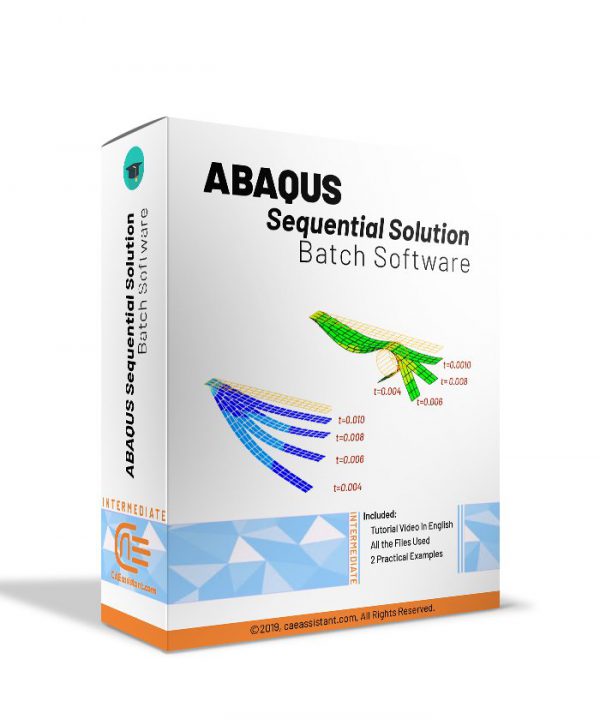
Madi Dehk –
I think it will be a fruitful python scripting package based on the description.
Yejun Kung –
You can find free tutorials in the web; but this tutorial package has a plan for its tutorials, a great english subtitle, contains required files, and you won’t get confused. Trust me it’s worth it to pay for it.
xīn yuè Ho –
With this package you can fully understand the python scripting in the Abaqus. And with the attachment files and English subtitles, that is something else!
hineken –
Why block typing while the video is playing? How can I practice the workshops? Should I memorize everything? It is so inconvenient
Matt Veidth –
It is related to video license software, and we have changed the settings for new uploads. Sorry for any inconvenience!
Ali Ahmed –
A great tutorial for beginners in the Abaqus scripting. Thanks! If I had a script, can I contact the website experts to help me out?
Adam Wan –
This is a professional tutorial package. It’s like you are in class with a great teacher. The lessons are simple and sound. Totally was worth my money. Thanks!
Jìng Píng –
I had never learned Python scripting so professionally. Although my native language is Chinese, the subtitle allowed me to fully understand the concepts. thanks a lot
Lars Berg –
High-quality education, organized lessons, and practical workshops. What more could you want?!
Martin Marín –
I recommend this package to ones who are a beginner like I was in python. An excellent tutorial for python scripting.
ivan Romero –
It seems to be a nice package for learning python. I have a question though, does this package good for anyone who wants to learn python or just good for ones who want to learn python only in Abaqus?
John Turner –
I was an absoloute beginner in python and needed it for my Abaqus project and didn’t want to drown in this vast subject. This package saved me. Many thanks!